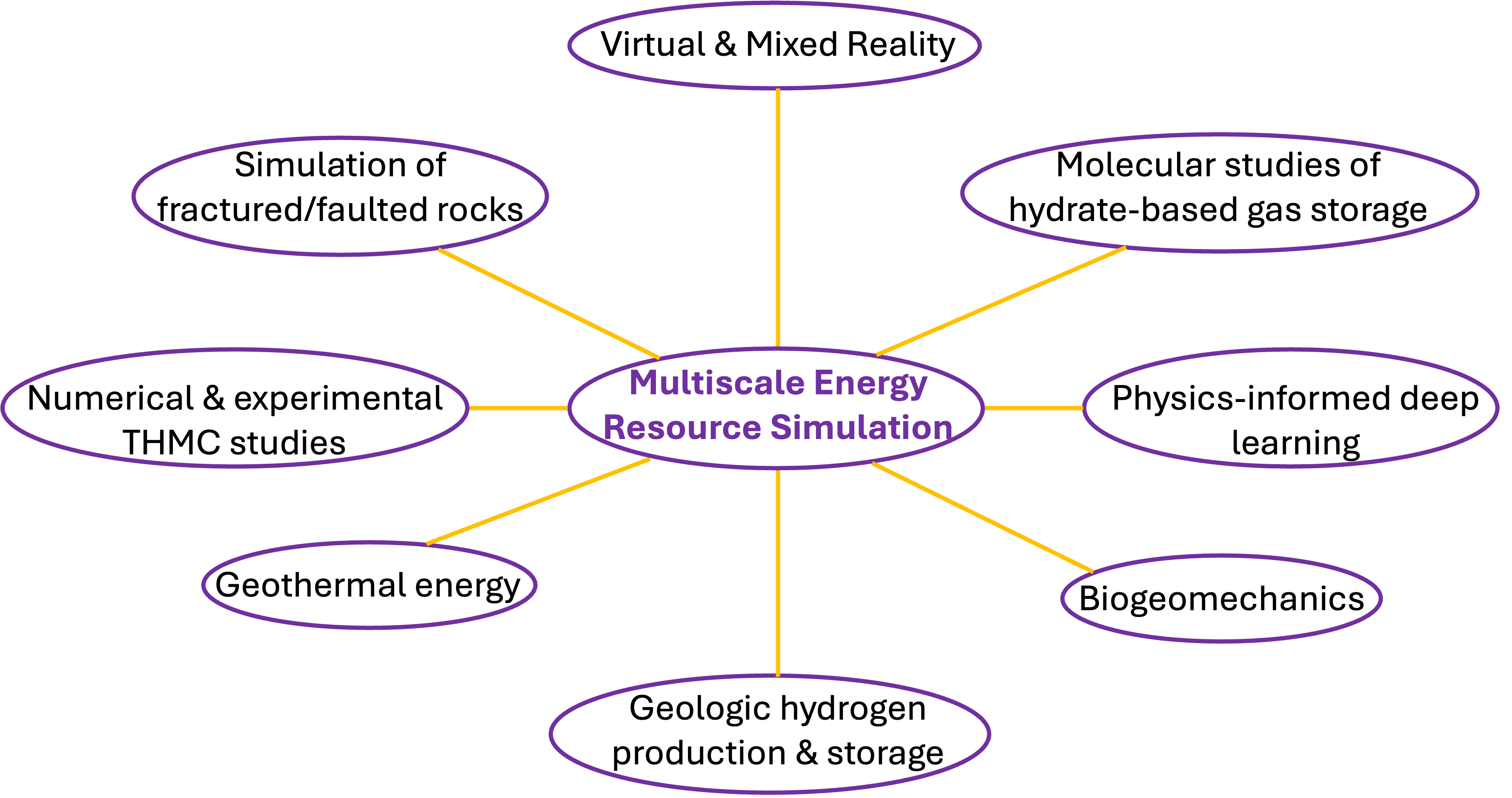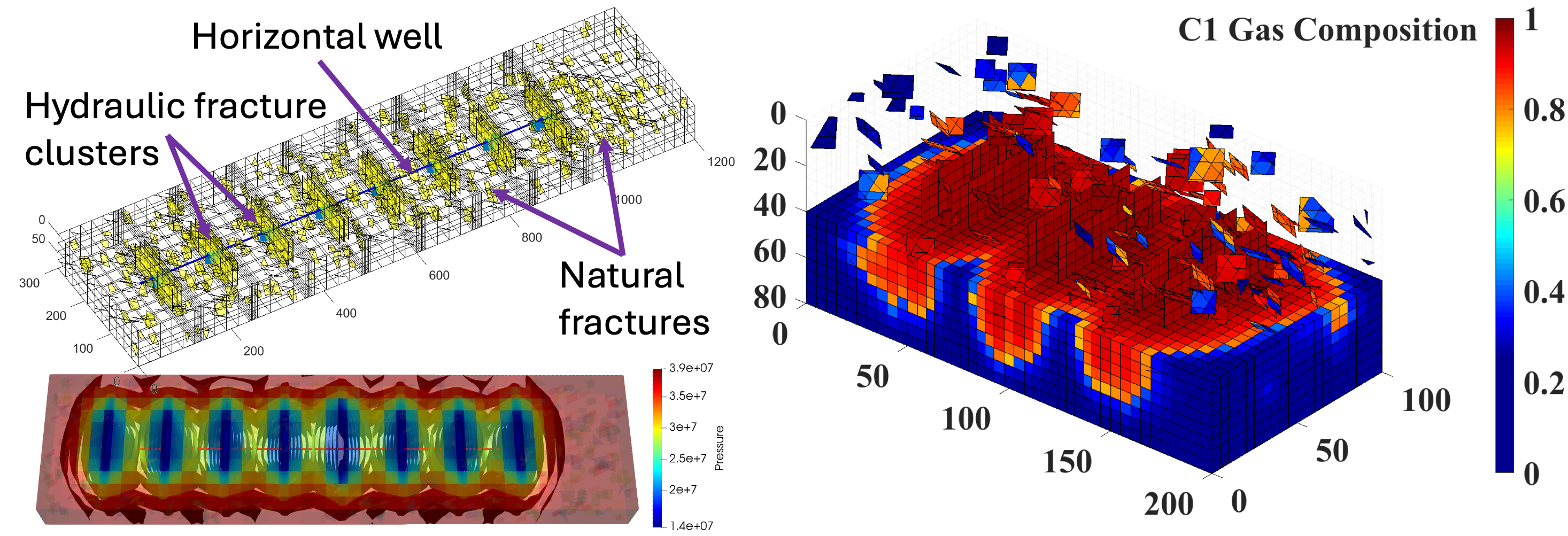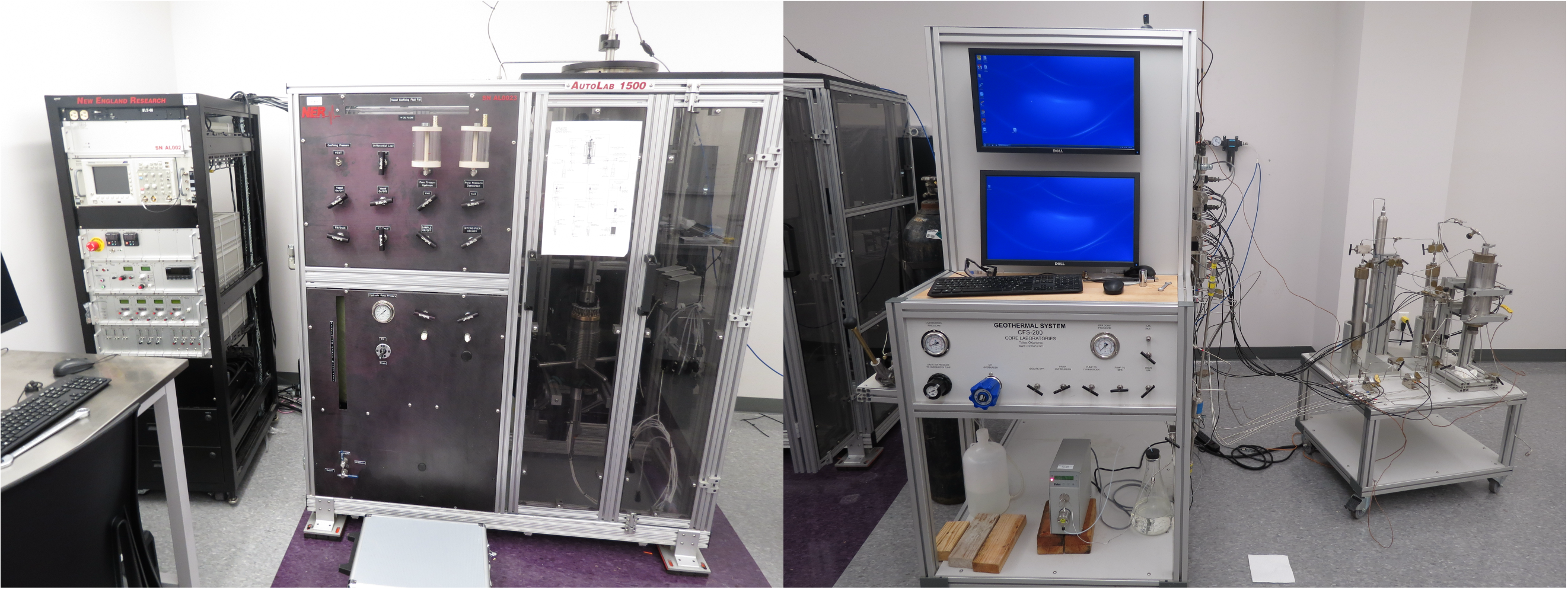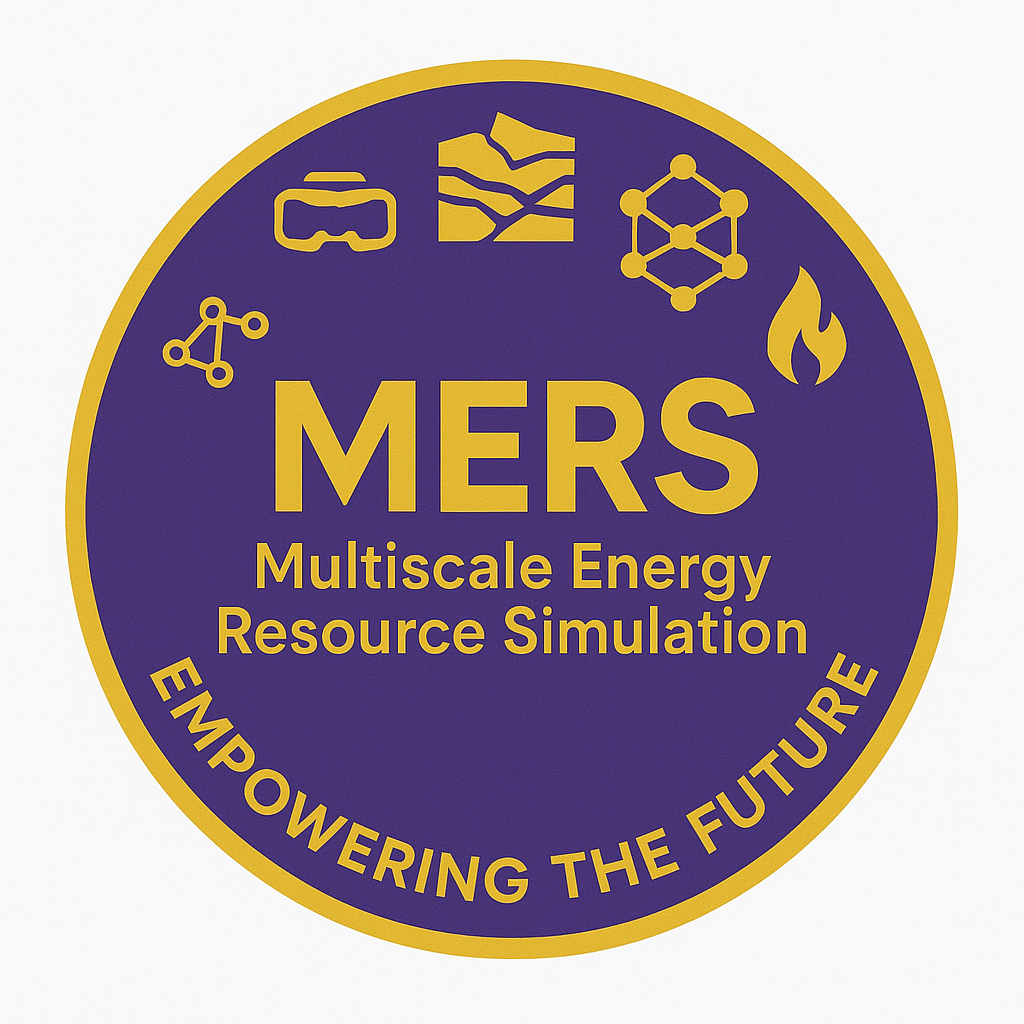
MERS Research Areas
The Multiscale Energy Resource Simulation (MERS) research group focuses on the multiscale computational and experimental studies of the coupled physical processes in energy resources. Our specific research areas include:
- Molecular and experimental studies of hydrate-based methane, hydrogen, and CO2 storage,
- Numerical Modeling of fractured (and faulted) rocks,
- Physics-informed deep learning
- Advanced visualization with Mixed Reality (MR),
- Numerical and Experimental thermo-hydro-chemo-mechanical (THCM) studies of underground CO2 and hydrogen storage,
- Numerical and Experimental THCM studies of geologic hydrogen production and Enhanced geothermal systems (EGS).
Our research efforts in these areas are summarized below:
Molecular studies of hydrate-based gas storage
We conduct large-scale molecular dynamics (MD) studies that reveal novel large-scale gas hydrate formation and dissociation phenomena on a scale larger than the simulation domain of previous gas hydrate studies. These studies provide new insights into the idea of enhancing methane, hydrogen, and CO2 storage by trapping gas nanobubbles within the growing solid hydrates.
Methane hydrate growth: Methane gas nanobubbles trapped within growing solid hydrates boost methane storage.
CO₂ hydrate growth: CO₂ nanobubbles trapped within growing solid hydrates boost CO₂ storage.
Modeling of fractured (and faulted) rocks
We develop fast and accurate embedded discrete fracture models for field-scale simulation of fractured rocks like petroleum reservoirs, enhanced geothermal systems, ultramafic rocks, etc. In Olorode et al. (2020), we developed the first 3D projection-based embedded discrete fracture model (pEDFM) that enables the modeling of fractured tight rocks with hundreds to thousands of natural fractures with any arbitrary orientation in a 3D space. In Olorode and Harun (2022), we developed a transient analytical modification for embedded discrete fracture models. This model, referred to as transient embedded discrete fracture model (tEDFM), enables the fast and accurate simulation of transient flow in fractured tight rocks. It is only 1.5 times slower than the standard EDFM and matches the accuracy of high-resolution reference solutions, which are very computationally expensive. In Rashid and Olorode (2024), we demonstrated that pEDFM does not model inclined or slanted fractures accurately because it projects fractures to matrix-matrix interfaces cell-by-cell. We fixed this discontinuous projection by developing a 3D continuous projection-based embedded discrete fracture model (CPEDFM) that projects a bunch of fracture cells within a neighborhood on continuous matrix-matrix interfaces.

Fast and accurate modeling of fractured tight rocks with hundreds to thousands of 3D natural fractures
Advanced visualization with Mixed Reality
We build interactive mixed reality applications that overlay 3D subsurface simulation data into head-mounted displays, providing immersive visualization of reservoir processes and gas hydrate dynamics.
Mixed Reality: Visualizing and measuring internal structures in gas hydrates with a physical tape.
Mixed Reality: Visualization of CO2 plume migration and subsurface flow.
Numerical and Experimental THCM Studies of Energy Production and Storage
To obtain reliable predictions of the coupled thermo-hydro-chemo-mechanical (THCM) processes in energy production and storage, we conduct numerical and experimental studies of these processes at high pressures and temperatures. These include studies of geologic CO2 and hydrogen storage, geologic hydrogen production, and geothermal energy production from enhanced geothermal systems (EGS).

Experimental facilities for coupled THCM studies: AutoLab 1500 triaxial rock testing apparatus and dual core-flooding/liquid pulse decay permeameter.
Physics-informed deep learning
We integrate physics-informed neural networks and graph-based deep learning to encode physical conservation laws for robust subsurface property inference and anomaly detection.
